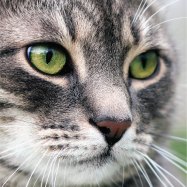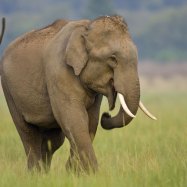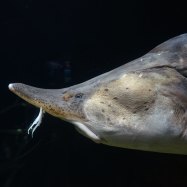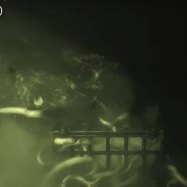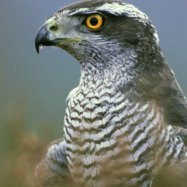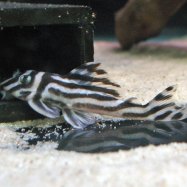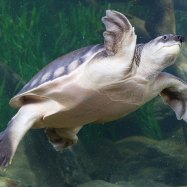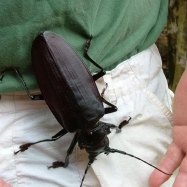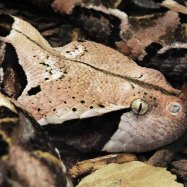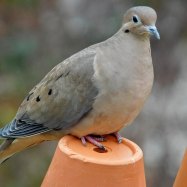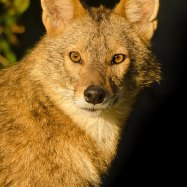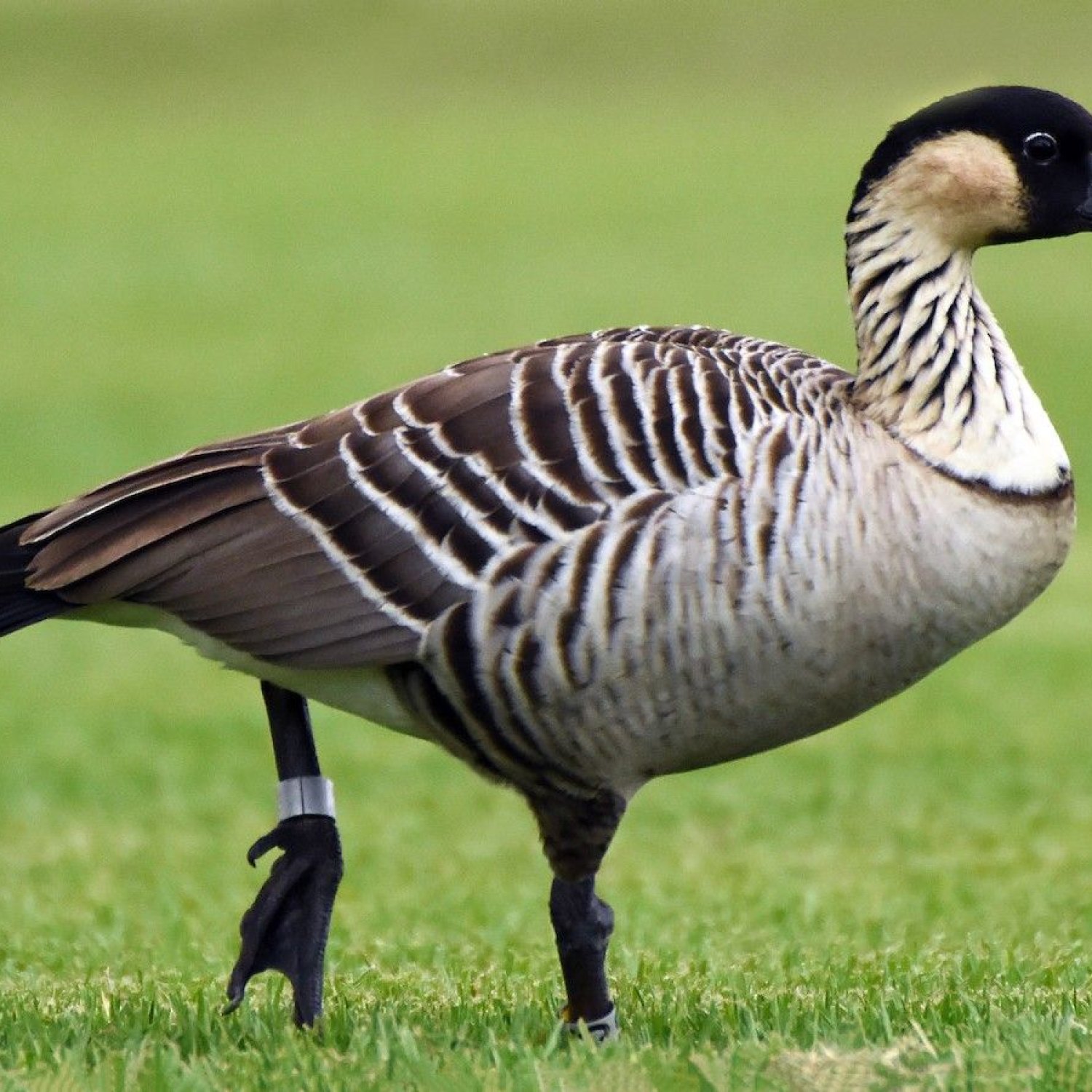
Hawaiian Goose
56 - 71 cm
The Hawaiian Goose, also known as the Nene, is a medium-sized goose that is endemic to the Hawaiian Islands. Measuring between 56-71 cm in length, this bird is a member of the Anatidae family and can be found in various locations throughout the islands. With its distinctive body shape and beautiful coloring, the Hawaiian Goose is a unique and fascinating animal that is highly valued and protected in its natural habitat.
Animal Details Summary:
Common Name: Hawaiian Goose
Kingdom: Animalia
Habitat: Wetlands, grasslands
The Fascinating Story of the Hawaiian Goose: Living Legacy of the Islands
From the scenic beaches and tropical forests to the rich cultural heritage, the Hawaiian Islands have always been revered as a paradise on earth. And while many of us might associate the islands with stunning landscapes and delicious Hawaiian cuisine, there is also a unique animal species that calls these islands home: the Hawaiian goose.But what exactly is a Hawaiian goose? Is it just any ordinary goose that happens to live in Hawaii? In this article, we will dive deep into the fascinating world of this now endangered species and discover why it is more than just a mere bird.
The Name Game
First things first, let’s get the nomenclature right - the Hawaiian goose has several names, all of which are equally fascinating Hawaiian Goose. The scientific name for this bird is Branta sandvicensis, where “Branta” refers to the genus of geese to which it belongs, and “sandvicensis” is derived from the Latin word for Hawaii, “Sandwich Islands.”The most common name for this species, however, is the “Hawaiian goose”, and it is also known by its Hawaiian name, “nēnē.” But the most intriguing of all is perhaps its nickname, the “nēnē nui” or the “big nēnē.” You might be wondering why, and we’ll get to that in a bit.
Kingdom, Phylum, Class - Oh My!
Now, let’s talk about the Hawaiian goose’s classification. As with all living creatures, it falls into the Kingdom of Animalia, the Phylum of Chordata (meaning it has a spinal cord), and the Class of Aves (birds). But what makes this goose so unique is its placement in the Order Anseriformes, which classifies it as a type of waterfowl.Anseriformes, also known as the “Anseriforms”, include ducks, geese, and swans and are found all over the world. But the Hawaiian goose is a special case, as it is the only living species of goose endemic to Hawaii Horgi.
The Anatidae Family
At the Family level, the Hawaiian goose belongs to the Anatidae family, which includes all species of ducks, geese, and swans. This family is known for its webbed feet, short, sturdy legs, and usually a broad, flat bill - all of which are prominent features of the Hawaiian goose.Wetlands and Grasslands: Home Sweet Home
When it comes to habitat, the Hawaiian goose prefers to dwell in wet and grassy areas. These birds are known to inhabit both natural and man-made wetlands, from marshes and swamps to grassy fields and parks. However, their natural habitat has drastically reduced over the years due to human encroachment, making their survival more challenging than ever.Herbivores for Life
Another fascinating aspect of the Hawaiian goose is its feeding method. As with other geese species, this bird is a herbivore, which means it survives on a solely plant-based diet. The Hawaiian goose is known to consume grasses, seeds, and leaves, making it a crucial player in maintaining the ecological balance of its habitat.The Hawaiian Islands: The Only Place to Find Them
As their name suggests, the Hawaiian geese are native to the Hawaiian Islands. However, they do not exist on all of the islands, and their current distribution is limited to four out of the eight main islands. These include the islands of Kaua’i, Maui, Hawai’i, and Moloka’i.But why are they only found in these specific islands? The answer lies in their origin.
The Origin Story: How the Hawaiian Goose Came to Be
As with any other species, the Hawaiian goose has a fascinating origin story that dates back thousands of years. These geese are believed to have evolved from the Canada goose, which would occasionally migrate to Hawaii in the winter months. Over time, these geese adapted to the Hawaiian climate and food sources, leading to the evolution of a separate species.As Hawaii is a remote island, the Hawaiian goose did not have any natural predators to compete with, leading to their increase in population and spread across the islands. However, with the arrival of humans on the islands, the fate of these geese took a turn for the worse.
Endangered: The Ongoing Battle for Survival
Unfortunately, the Hawaiian goose is currently listed as an endangered species, and conservation efforts are in place to protect and preserve its population. The once abundant and widespread Hawaiian geese are now limited to a few islands, with a population estimated to be around 2,000 birds.One of the biggest threats to their survival is the loss of habitat due to human development and invasive species. These birds are also prone to diseases carried by introduced predators, such as feral cats, rats, and mongoose. Additionally, the rising sea levels caused by climate change pose another major threat to their survival.
To ensure the survival of this species, a number of conservation efforts are ongoing, including captive breeding programs, habitat restoration projects, and public education programs.
Size and Coloration: What Makes Them Unique
The Hawaiian goose is a medium-sized bird, with an average length of 56-71 cm. They have a distinct coloration, with a black head, brownish-gray body, and white cheek patches. These colors help them blend in with their natural habitat, making it easier for them to avoid predators.One interesting fact about the Hawaiian geese is that males and females have different color patterns, making it easier to tell them apart. Male Hawaiian geese tend to be larger and have a more prominent black color on their heads, while females have a more muted coloration and a smaller bill.
A Living Legacy of the Hawaiian Islands
The Hawaiian goose, also known as the nēnē, is a symbol of the Hawaiian Islands and its unique wildlife. These birds have a deep connection to the history and culture of Hawaii, with their presence dating back thousands of years, long before the arrival of humans on the islands.From being considered a delicacy in ancient Hawaiian feasts to being on the brink of extinction, the Hawaiian geese have been through it all. And while their population continues to face challenges, they remain a testament to the resilience of nature and the importance of preserving our planet’s biodiversity.
In conclusion, the Hawaiian goose is much more than just a bird that happens to live in Hawaii. It is a living legacy of the islands, a symbol of their rich history and unique wildlife. And with continued conservation efforts, we hope that the beautiful nēnē will continue to grace the Hawaiian islands for generations to come.

Hawaiian Goose
Animal Details Hawaiian Goose - Scientific Name: Branta sandvicensis
- Category: Animals H
- Scientific Name: Branta sandvicensis
- Common Name: Hawaiian Goose
- Kingdom: Animalia
- Phylum: Chordata
- Class: Aves
- Order: Anseriformes
- Family: Anatidae
- Habitat: Wetlands, grasslands
- Feeding Method: Herbivore
- Geographical Distribution: Hawaii
- Country of Origin: United States
- Location: Endemic to the Hawaiian Islands
- Animal Coloration: Black, brown, and white
- Body Shape: Medium-sized goose
- Length: 56 - 71 cm
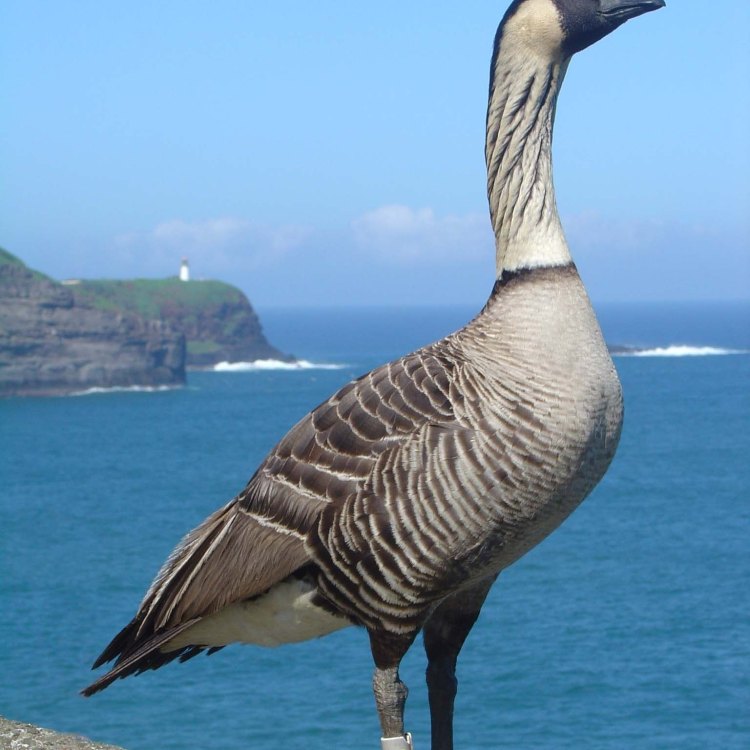
Hawaiian Goose
- Adult Size: Medium
- Average Lifespan: 20-25 years
- Reproduction: Monogamous
- Reproductive Behavior: Nest on the ground
- Sound or Call: Loud honking sound
- Migration Pattern: Non-migratory
- Social Groups: Form small family groups
- Behavior: Territorial and aggressive towards intruders
- Threats: Habitat loss and degradation, predation
- Conservation Status: Endangered
- Impact on Ecosystem: Important for seed dispersal
- Human Use: Protected species, used for conservation efforts
- Distinctive Features: White head and cheeks, black face and neck, brown body
- Interesting Facts: Only goose native to Hawaii, known as the Nēnē in Hawaiian
- Predator: Mongooses and cats
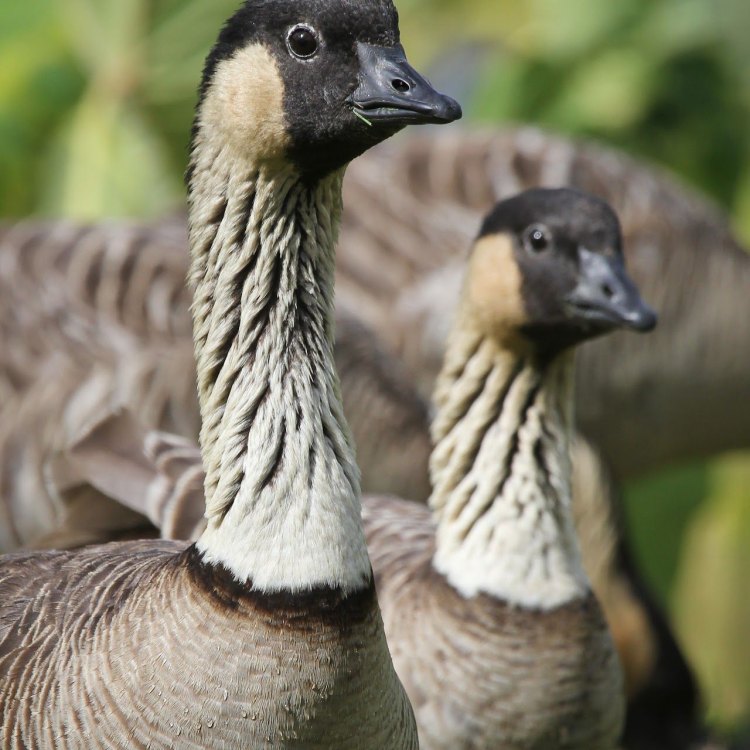
Branta sandvicensis
The Rare and Fascinating Hawaiian Goose: A Unique Species in Need of Conservation
The Hawaiian archipelago is famous for its stunning beaches, lush forests, and distinctive wildlife. Among the diverse species found on the islands is the Hawaiian goose, also known as the Nēnē in the local language. This bird is a true symbol of resilience, having survived near extinction and facing ongoing threats to its survival. From its distinctive appearance to its important role in the ecosystem, the Hawaiian goose is a fascinating species that deserves our attention and protection PeaceOfAnimals.Com.The Hawaiian Goose: Size, Lifespan, and Reproduction
As its name suggests, the Hawaiian goose is a bird native to the islands of Hawaii. It is a medium-sized bird, measuring about 22 inches in length and weighing between 3-5 pounds. This makes it slightly smaller than the familiar Canada goose. Its average lifespan is between 20-25 years, but it has been known to live up to 30 years in captivity.The Hawaiian goose is a monogamous bird, meaning that it mates for life. Pairs typically form during the breeding season, which runs from September to April. Like most geese, they lay eggs in a nest, but what sets the Hawaiian goose apart is the location of their nests. Unlike other bird species that nest in trees or on cliffs, the Hawaiian goose prefers to nest on the ground. This behavior puts their eggs and young at risk of predation, but it also makes them more vulnerable to threats such as habitat loss and degradation Harrier.
Sounds, Migration, and Social Behavior
If you ever visit Hawaii, you may hear a loud honking sound that resembles a car horn. This is the call of the Hawaiian goose, which is used for communication among members of a family group. The sound is distinctive and can be heard from a distance, alerting other geese of potential danger or signaling the location of food sources.Unlike some other migratory bird species, the Hawaiian goose is non-migratory. They do not fly to a different location for breeding or to escape harsh weather conditions. Instead, they remain in their preferred habitat year-round, making them more vulnerable to changes in their environment. Hawaiian geese also form small family groups, consisting of a monogamous pair and their offspring. They are territorial and can be aggressive towards intruders, particularly during the breeding season.
Threats to the Hawaiian Goose
While the Hawaiian goose has faced challenges throughout its existence, human activities have posed the most significant threat to its survival. Habitat loss and degradation are major issues that have affected the Hawaiian goose population. The conversion of natural habitats into agricultural land, urban development, and invasive plant species have all contributed to the decline of suitable habitats for the Hawaiian goose.Another significant threat to the Hawaiian goose is predation. While they have few natural predators, the introduction of non-native species such as mongooses and cats has had a devastating impact on their population. These predators consume their eggs, young, and even adult birds, making it difficult for the Hawaiian goose to thrive.
The Status of the Hawaiian Goose and Its Impact on the Ecosystem
Due to the range of threats facing the Hawaiian goose, its population has drastically declined over the years. In the late 1950s, there were only about 30 Hawaiian geese left in the wild. Thanks to conservation efforts, their numbers have increased, but they remain an endangered species. With a current estimated population of around 3,000, the Hawaiian goose is still at risk.Apart from being an important part of the Hawaiian ecosystem, the Hawaiian goose also plays a crucial role in seed dispersal. As herbivores, they consume a variety of plants and pass the seeds through their digestive system. When they defecate, these seeds are dispersed, contributing to the growth and diversity of plant species in the ecosystem.
Human Use and Conservation Efforts
The Hawaiian goose has been a protected species since 1967, and hunting them is strictly prohibited. They are also used for conservation efforts, with several organizations working to protect and increase their population. Captive breeding and reintroduction programs have been successful in restoring their numbers, and ongoing efforts continue to monitor and protect the remaining population.Distinctive Features and Interesting Facts
The Hawaiian goose is easily recognizable by its distinctive coloration. They have a white head and cheeks, a black face and neck, and a brown body. This unique coloration sets them apart from other goose species and makes them a beloved symbol of Hawaii's natural heritage.One of the most interesting facts about the Hawaiian goose is that it is the only goose native to Hawaii. They have been present on the islands for millions of years, evolving into a unique species that can survive in the harsh volcanic environment. The Hawaiian goose is also featured on the state's quarter and is a popular subject in Hawaiian folklore and art.
In Conclusion
The Hawaiian goose may seem like just another bird species to some, but their story is much more than that. From near extinction to ongoing conservation efforts, the Hawaiian goose is a symbol of resilience and the power of conservation. Their unique features and important role in the ecosystem make them a fascinating species that deserves our attention and protection. It is up to us to ensure that this majestic bird continues to thrive on the beautiful islands of Hawaii.
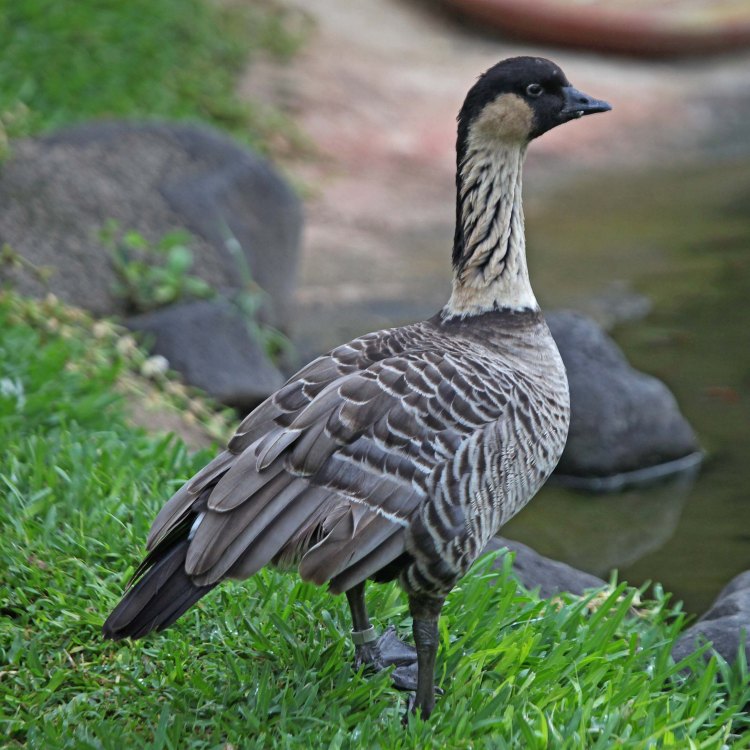
The Fascinating Story of the Hawaiian Goose: Living Legacy of the Islands
Disclaimer: The content provided is for informational purposes only. We cannot guarantee the accuracy of the information on this page 100%. All information provided here may change without prior notice.

